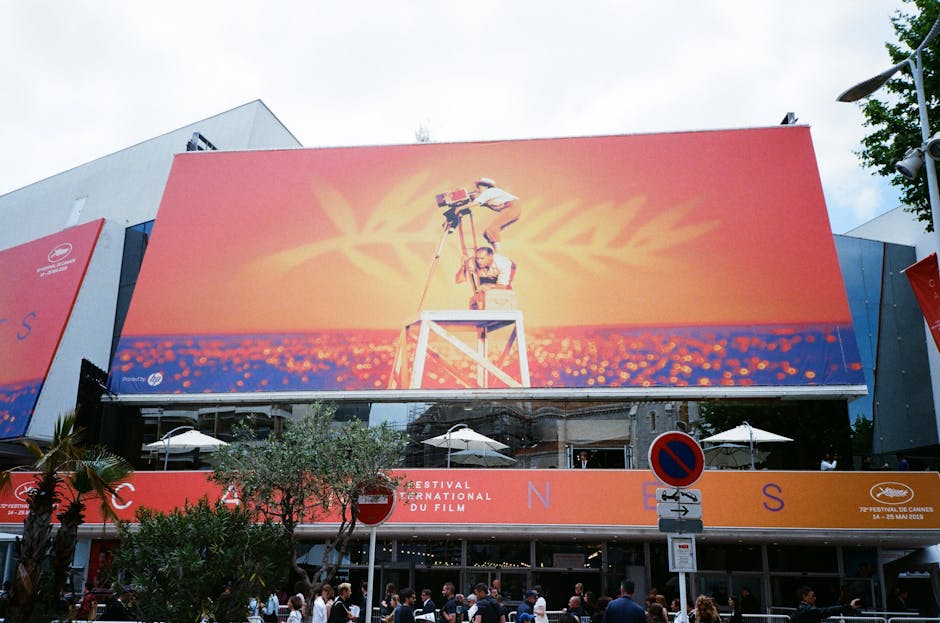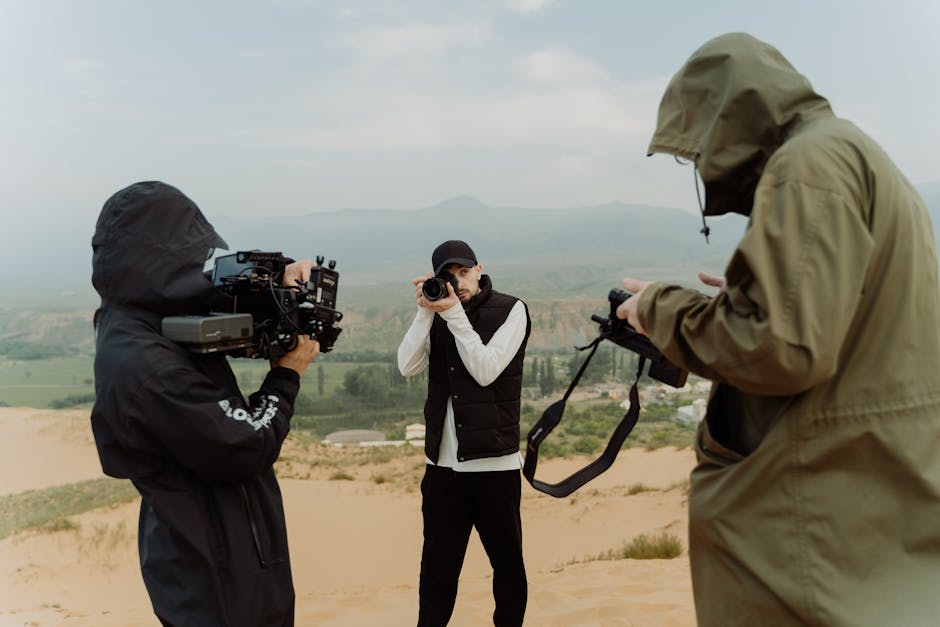Iconic movie scenes have the power to transcend their films, becoming cultural touchstones that influence art, language, and even the way we see the world. From the suspenseful shower in “Psycho” to the triumphant bow of the Titanic, these moments are etched into our collective memory. At Scene Flow – Scenlo, we delve into the anatomy of these legendary scenes, exploring what makes them unforgettable and how they continue to shape both storytelling and audience experience.
The Anatomy of an Iconic Movie Scene

Photo by Jan van der Wolf on Pexels
What transforms a scene from a mere plot point into an iconic moment? The answer lies in a blend of visual storytelling, emotional resonance, innovative technique, and cultural timing. Directors and cinematographers often use a combination of lighting, camera angles, and music to heighten the impact of a scene. Consider the swirling violins and stark shadows of Hitchcock’s “Psycho” shower scene—every element is meticulously crafted to evoke terror and suspense. The choreography of movement, the precision of editing, and the subtlety of performance all coalesce to create an experience that lingers long after the credits roll.
Iconic movie scenes also encapsulate universal emotions or ideas. The pottery wheel sequence in “Ghost” channels longing and love through tactile imagery, while the “I’m the king of the world!” moment in “Titanic” captures the exhilaration of freedom and hope. These scenes often arrive at narrative turning points, crystallizing character arcs or themes in a single, unforgettable image. The result is a moment that not only advances the story but also becomes a shorthand for the film’s essence in the cultural imagination.
Moreover, the context in which a scene is released can amplify its impact. A groundbreaking special effect or a bold thematic choice can resonate with contemporary audiences, ensuring the scene’s place in cinematic history. This fusion of craft, emotion, and timing is what makes iconic movie scenes enduring touchstones for viewers and filmmakers alike.
Unforgettable Examples: Scenes That Changed Cinema

Photo by Darya Sannikova on Pexels
Throughout film history, certain scenes have left an indelible mark on both audiences and the industry. Alfred Hitchcock’s “Psycho” shower scene revolutionized horror filmmaking, introducing a new level of psychological tension and redefining audience expectations. Its rapid cuts, piercing score, and shocking violence were unprecedented, making it one of the most analyzed and referenced moments in cinema.
Similarly, the “E.T. the Extra-Terrestrial” bicycle flight across the moon became a symbol of wonder and friendship, its silhouette instantly recognizable even to those who haven’t seen the film. The upside-down kiss in “Spider-Man” not only redefined superhero romance but also inspired countless parodies and homages, cementing its status as a pop culture phenomenon.
Other scenes, like the chestburster moment in “Alien,” shocked audiences with their visceral intensity, while the “Why so serious?” interrogation in “The Dark Knight” showcased a villain’s chilling unpredictability. These scenes do more than entertain—they challenge, surprise, and sometimes even unsettle viewers, pushing the boundaries of what film can achieve.
Each of these examples demonstrates how iconic movie scenes can encapsulate the spirit of their films while also influencing genres, inspiring future filmmakers, and embedding themselves in the wider culture.
Cultural Impact: How Iconic Scenes Shape Society

Photo by Antonio Friedemann on Pexels
Iconic movie scenes often ripple far beyond the screen, shaping language, fashion, and even social attitudes. The phrase “Here’s looking at you, kid” from “Casablanca” has entered everyday conversation, while the image of Julie Andrews spinning atop a mountain in “The Sound of Music” has inspired everything from advertisements to fashion editorials. When Elsa belts out “Let It Go” in “Frozen,” it becomes not just a memorable moment but an anthem of empowerment for a generation.
These scenes also serve as points of reference in art, advertising, and even politics. The visual of Travis Bickle talking to himself in the mirror in “Taxi Driver” has been echoed in countless films and TV shows, symbolizing internal struggle and alienation. The slow-motion walk from “Reservoir Dogs” is now shorthand for cool defiance, referenced in everything from music videos to commercials.
Moreover, iconic scenes can reflect or even challenge societal norms. The fake orgasm scene in “When Harry Met Sally” opened up conversations about female sexuality, while the diverse cast and themes of “Black Panther” signaled a shift toward greater representation in mainstream cinema. In these ways, iconic movie scenes don’t just mirror culture—they help shape it, providing audiences with new ways to see themselves and the world around them.
Behind the Scenes: Crafting the Unforgettable

Photo by cottonbro studio on Pexels
The creation of an iconic movie scene is rarely accidental. It involves careful planning, collaboration, and often a willingness to take creative risks. Directors work closely with writers, actors, and technical crews to ensure that every element serves the story’s emotional core. For example, the tension in “Saving Private Ryan’s” Omaha Beach landing was achieved through a combination of handheld camera work, desaturated colors, and immersive sound design, placing viewers in the midst of chaos and fear.
Actors, too, play a pivotal role in elevating scenes to iconic status. Leonardo DiCaprio’s exuberance atop the Titanic’s bow or Heath Ledger’s unsettling performance as the Joker are testaments to the power of commitment and nuance. Sometimes, improvisation leads to unforgettable moments—the “You talkin’ to me?” line in “Taxi Driver” was unscripted, yet it became one of the film’s most memorable lines.
Technical innovation can also contribute to a scene’s impact. The use of practical effects in “Jurassic Park” or groundbreaking CGI in “The Matrix” set new industry standards and expanded the possibilities of visual storytelling. Ultimately, it’s the synergy of talent, technique, and vision that transforms a good scene into an iconic one.
Legacy and Influence: Iconic Scenes Across Generations

Photo by Pexels LATAM on Pexels
The legacy of iconic movie scenes extends across generations, inspiring filmmakers, artists, and audiences alike. These moments are often parodied, referenced, and reimagined, ensuring their continued relevance. For example, the moonlit bicycle flight from “E.T.” has been recreated in animated films, commercials, and even video games, while the shower scene from “Psycho” remains a staple of suspense and horror homages.
Iconic scenes also influence the language of cinema itself. Techniques pioneered in one era—such as the use of montage or nonlinear editing—become standard tools for future storytellers. The emotional beats and visual motifs established in classic scenes are echoed in contemporary films, creating a dialogue across time and genres.
For viewers, these scenes become personal touchstones, evoking memories of when they first experienced the shock, joy, or awe of a cinematic moment. They serve as entry points into deeper discussions about film, culture, and the human experience. In this way, iconic movie scenes are more than just entertainment—they are part of our shared cultural heritage, continually shaping and reflecting the flow of storytelling.
Conclusion: The Enduring Power of Iconic Movie Scenes

Photo by MART PRODUCTION on Pexels
From the golden age of Hollywood to the digital era, iconic movie scenes remain at the heart of what makes cinema magical. They distill complex emotions and ideas into singular, unforgettable moments that resonate across time and culture. Whether through groundbreaking technique, powerful performance, or cultural relevance, these scenes remind us of the transformative power of storytelling.
At Scene Flow – Scenlo, we celebrate the artistry and impact of these legendary moments, inviting readers to revisit, analyze, and appreciate the scenes that have shaped the way we watch—and remember—film. As new generations of filmmakers and audiences continue to discover and reinterpret these moments, the legacy of iconic movie scenes will only grow, ensuring their place in the ever-evolving flow of cinematic storytelling.
Sources
- https://thescriptlab.com/blogs/34080-the-most-iconic-movie-scenes-of-all-time/
- https://nofilmschool.com/movies-scenes-pop-culture
- https://www.youtube.com/watch?v=YrlJKE-YYAE
- https://www.ign.com/lists/100-best-movie-moments
- https://www.nycastings.com/lights-camera-study-unforgettable-movie-scenes-every-actor-should-analyze/

